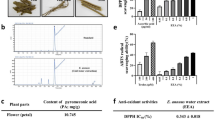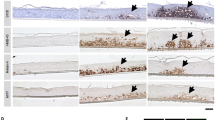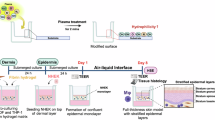Abstract
Riley and Seal1 suggested that butylated hydroxyanisole (BHA) might be a carcinogen in view of the observation in guinea-pigs of pseudopods of deep epithelium of skin penetrating the basement membrane after surface application of BHA (20 per cent w/w in lanolin) daily for 6 weeks. Similar effects were reported with two analogues of BHA (3-hydroxyanisole and 4-hydroxyanisole) and the phenomenon, termed microinvasion, has recently been discussed in greater detail2–4. A marked resemblance was alleged to have been found between this lesion and the microinvasive process seen in premalignant hamster cheek pouch epithelium which had been painted with the carcinogen 7,12-dimethylbenz(α)anthracene (DMBA) and in possible premalignant human oral mucosa. Furthermore, it was pointed out that one of the earliest morphological lesions seen in human skin tumours is microinvasion.
This is a preview of subscription content, access via your institution
Access options
Subscribe to this journal
Receive 51 print issues and online access
$199.00 per year
only $3.90 per issue
Buy this article
- Purchase on SpringerLink
- Instant access to full article PDF
Prices may be subject to local taxes which are calculated during checkout
Similar content being viewed by others
References
Riley, P. A., and Seal, P., Nature, 220, 922 (1968).
Seal, P., Riley, P. A., and Inman, D. R., J. Invest. Derm., 52, 264 (1969).
Woods, D. A., and Smith, C. J., J. Invest. Derm., 52, 259 (1969).
Woods, D. A., and Smith, C. J., Exp. Mol. Path., 10, 107 (1969).
Setälä, K., Dammert, K., Setälä, H., Merenmies, L., and Holsti, P., Z. Krebsforsch., 61, 548 (1957).
Harrison, C. V., (edit. by), Recent Advances in Pathology, seventh ed. (J. and A. Churchill, Ltd, London, 1960).
Spitz, S., Amer. J. Path., 24, 591 (1948).
Stout, A. P., Cancer, 14, 1216> (1961).
Wilder, O. H. M., and Kraybill, H. R., Summary of Toxicity Studies on Butylated Hydroxyanisole (American Meat Institute Foundation, University of Chicago, 1948).
Brown, W. D., Johnson, A. R., and O'Halloran, M. W., Austral. J. Exp. Biol. Med. Sci., 37, 533 (1959).
Hodge, H. C., Fassett, D. W., Maynard, E. A., Downs, W. L., and Coye, jun., R. D., Toxicol. Appl. Pharmacol., 6, 512 (1964).
Clegg, D. J., Food Cosmet. Toxicol., 3, 387 (1965).
Gilbert, D., and Golberg, L., Food Cosmet. Toxicol., 3, 417 (1965).
Author information
Authors and Affiliations
Rights and permissions
About this article
Cite this article
GRASSO, P., ROSTRON, C. Microinvasion of Epidermis caused by Substituted Anisoles. Nature 225, 188–189 (1970). https://doi.org/10.1038/225188a0
Received:
Issue date:
DOI: https://doi.org/10.1038/225188a0



